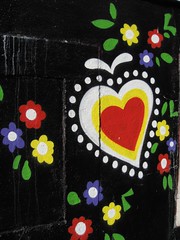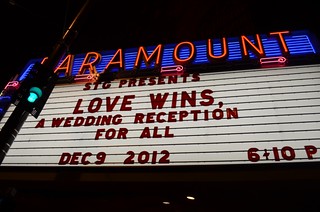My friend Karina asked me today, “Who were your teenage pals?” She was referring not to the actual people I hung out with, but rather the authors and musicians who threw me a rope and created a bridge that let me walk from there to here. The names on her list included Dorothy Allison, Rita Mae Brown, and the Indigo Girls.
The Indigo Girls’ second album, eponymously titled, was given to me as a gift upon graduating from high school. It was a bookend, as it were, to the end of one time period and the beginning of another. And that album has become a talisman and a touchstone for me. I spent the summer drinking it in, sweating in the heat of SW Florida and wondering what ghosts had to do with anything. I wondered if I would ever go “all the way to Paris, to forget your face” … and failing, just like Emily did.
“I spent four years prostrate to the higher mind, got my paper, and I was free.” Funny thing was, in my town, the Indigo Girls weren’t on the radio, but when I got to college, it was practically a requirement that every student at Oberlin have this playing on their cassette deck. And here I am, 20 years later, learning again and again:
There’s more than one answer to these questions
pointing me in crooked line
The less I seek my source for some definitive
The closer I am to fine.
I didn’t come out a bi until I was a sophomore in college, and queer literature was a ways off from my young, teen mind. I started with Judy Blume, working my way through her oeuvre, but stopping abruptly at Fifteen. I never crossed that line and to this day still have never read that, nor Wifie or Forever. But as I navigated middle school, I learned I wasn’t the only girl worried about when she would get her period and be just like every other girl. I loved that her stories had girls I could relate to, Jewish characters, and people who just seemed real.
As I entered high school, I began to read more science fiction and fantasy. Piers Anthony’s Xanth books provided comic relief, while his Blue Adept showcased a classic underdog. I had a friend who was a BIG fan of Stephen King, so I read many of his books, terrifying myself half out of my wits. I still remember noticing every sneeze and sniffle while I was reading The Stand, which I think was his best.
Like Judy Blume, Madeleine L’Engle ushered me through the early teen years. I instantly fell in love with Meg in A Wrinkle in Time, a smart girl who adored her family. And even though I probably first read that book when I was about 10, I revisited the Time Trilogy throughout my teen years. Being smart and a girl was a difficult combination, and here was proof of others like me. I devoured all L’Engle’s books, including the journals she wrote later in life. They were like tiny lighthouses on a farther shore, just visible enough that I could orient myself.
And finally there was Ursula LeGuin. It was in her book, The Dispossessed, that I first learned about anarcho-syndicalism. I wrote an essay for the Optimist Club on “Freedom: Our Most Precious Heritage”, and it won second place. The conclusion I drew was that a completely free society would be totally anarchic. And I know somewhere in there I mentioned that women did not earn equal pay to men. I only mention this because as a winner, I had to read my essay to the Optimists – and the only women in the room that day were my mother, my teacher, and the mothers of the two other students who had won. I didn’t realize what I said until later, and then I was glad. And terrified.
I was thinking more about music, but music has never been central to me the way words have been. And then I remembered one more thing. My twin sister and I shared a bedroom, and one night a week we would listen to a call-in radio show with a psychologist. I can’t remember his name, but we used to listen to the show in the dark and comment on his advice. I’m not sure it was formative in the way that those books were, but there was something indefinable about it, as we formed our own characters from that inchoate darkness.




